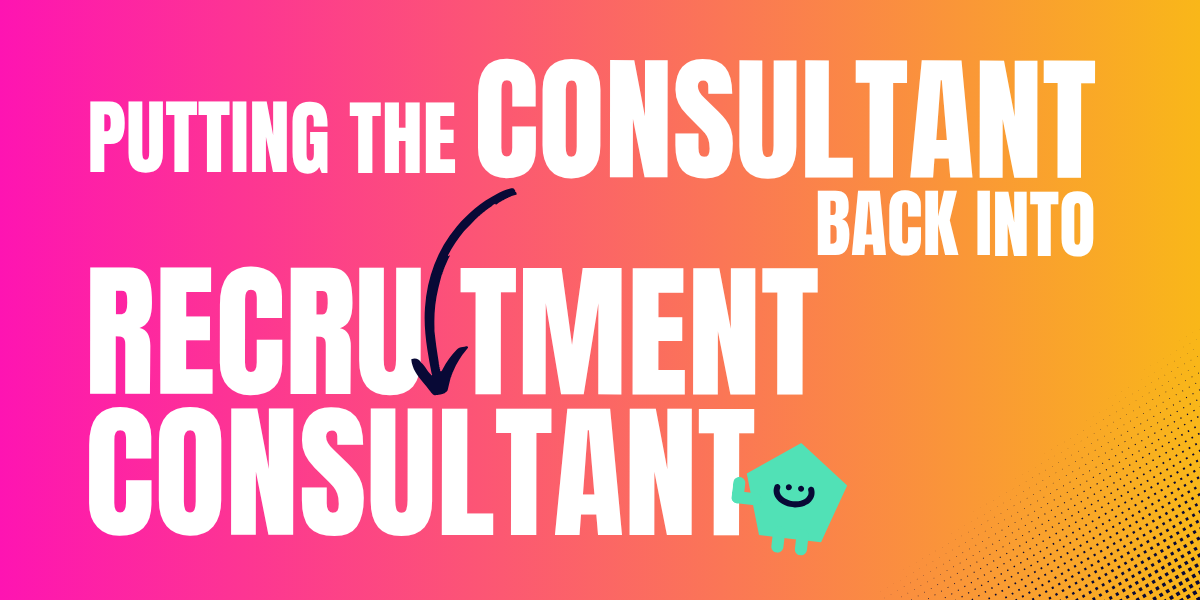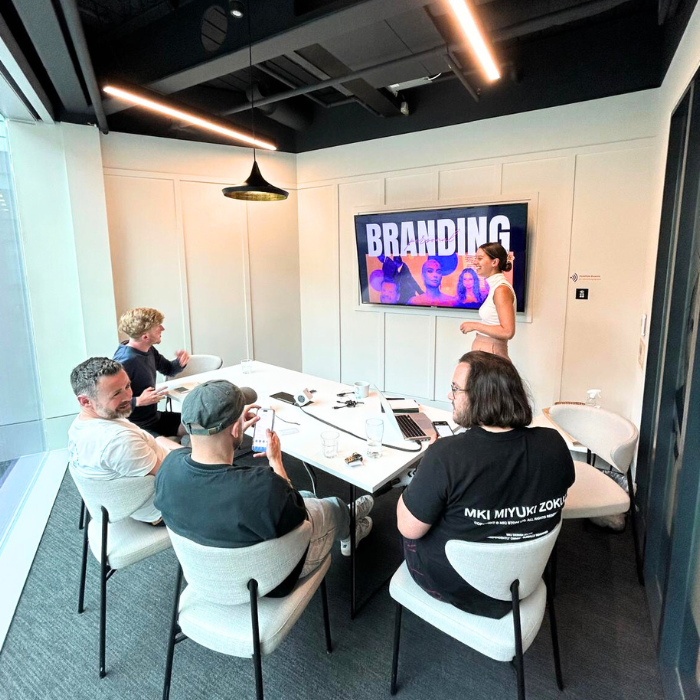Where did the 'consultant' part go in 'recruitment consultant'? In today's difficult job market, keeping this process alive can build momentum and become your competitive edge.
Somewhere along the line, the word “consultant” started to vanish from the recruiter’s title. Psychologically, this impacted working practices, leading to less of a consultancy style approach, with many recruiters only consulting at the point of when they’ve got a job on.
The reality is that this needs to happen way before then. As a recruitment consultant, you have an ability to outshine the rest of the market. After all, consultancy is the advantage that wins better briefs and reduces any friction in negotiations. It’s also a way of keeping your clients for years instead of months.
Align Outreach with Substance (The Sweetshop Test).
We love this analogy. Imagine your LinkedIn profile is a sweetshop. Your email campaign is you handing out flyers to draw people in. You’ve invested time and effort to position yourself as the best sweetshop on the high street.
But when people walk through the door, the stock on offer needs to match the promise. If what they find isn’t what the flyer sold (useful insight, proof you know their market, clarity on how you work), then trust evaporates instantly and they’ll try the shop next door.
And the chances of them returning? Very, very low.
If your personal brand doesn’t already signal authority, every outreach, every call, every negotiation is harder than it needs to be. Strong personal brands generate warmer inbound, reduce resistance at the point of sale, and make your desk more profitable.
Employee posts extend a company’s reach by 561% and people are 2.4x more likely to view an individual as credible over a company brand; recruiters who actively post also see 2.5x higher InMail acceptance rates. Now that’s leverage you need to make use of.
Action to take this week:
audit your LinkedIn profile, share one educational post and one short video with a clear POV on your market, and engage (properly) with five client-side decision makers’ posts. Treat this as pre-sales consulting.
Use Market Intelligence to Win and Retain Business.
Consultants bring insights as well as candidates. If you have access to LinkedIn Talent Insights (and many agencies do), build simple, punchy one-pagers: what’s happening in the prospect’s talent market, how competitors are hiring, and what this means for time-to-hire and salary bands.
Only 45% of consultants we surveyed said they’re actually using Talent Insights, leaving a clear opportunity for those who do. Some don’t see the value in it, but this could be your distinguishing feature.
Even a basic report, paired with a short executive summary in your voice, does three things: (1) it earns the meeting, (2) it softens fee negotiations by signalling expertise, and (3) it gives you an excuse to nurture non-hiring prospects with useful updates rather than “any roles coming up?” messages.
Action to take this week:
pick one target account, create a three-slide Insights Brief (talent supply, competition, salary benchmarks), and send it with a concise “what this means for you” note. Repeat for one existing client as a six-monthly market update.
Don’t Just Say “Yes”.
The reality is, it’s five times more expensive to win back a lost client than it is to retain one. Part of retention is saying “no” when the brief is unfillable, and educating the hiring team on what’s realistic.
You are the market expert, so don’t be afraid to challenge and push back for the right reasons. Use data (applications-per-hire, interview-to-offer ratios, time-in-process) and real salary benchmarks to reset expectations before you commit to anything.
Also, it’s a quality over quantity approach. Chase better-quality jobs rather than “more jobs”. In a market where the average agency fill rate sits around 24%, being choosy and delivering fast on the right briefs is how you can justify your fees and protect your reputation at the same time.
Action to take this week:
introduce a “qualification scorecard” for new roles. If a brief doesn’t meet your minimum thresholds (clarity, responsiveness, realistic comp, exclusive/retained likelihood), your default is to consult and fix the brief, instead of just accepting it.
Nurture Consultatively.
When we asked recruiters about time split, many said at least half their week is nurture. A sizeable portion spend 75% on it. The question is: how consultative is that time?
Get rid of the “just circling back” approach and replace it with structured value. EVP advice, process improvements, interview-to-offer diagnostics, periodic market updates and the like make so much more of an impression, especially when they’re aligned to your client’s workforce plan. This is how you become part of the client’s recruitment ecosystem, instead of seen as just another transactional supplier.
Action to take this week:
map your top ten accounts and schedule quarterly “talent market reviews” with a written agenda. This should include hiring outcomes vs benchmarks, process friction points, upcoming skills demand, salary alignment, and actions. Send a short write-up after each session to tie the bow on the whole package.
Sweat Your LinkedIn Licences.
Personal brands dramatically increase licence ROI: people engage more with people, and recruiters who show up consistently see higher acceptance and response rates. If you want measurable return, allocate seats to those who publish helpful content and track the right KPIs (inbound leads, influence on deals, audience growth, response rates). This way, you won’t be blindly throwing money away through licence renewals.
Action to take this week: Set three PB KPIs per licence holder (e.g., 2 posts/week, 10 targeted comments/week, ≥15% InMail response on warmed prospects) and review monthly alongside their pipeline. Consider “licence wins” for high performers to reinforce the behaviour.
We could go on about this topic ad infinitum. But essentially, putting the “consultant” back into “recruitment consultant” means showing your value long before a requisition appears, and carrying that value through qualification, delivery and retention.
To summarise, start by making sure the sweetshop matches the flyer: align outreach with a profile and content stream that proves substance. Use simple market intelligence to frame reality and push back on poor briefs. Make nurture meetings consultative, not transactional. Publish content that educates, so price becomes a footnote and partnership becomes the default.
Do this consistently and you’ll be the advisor clients call before they even draft the job spec. That’s the power of true consultancy.
.png?updated=1741082390)



.png?updated=1753956869)